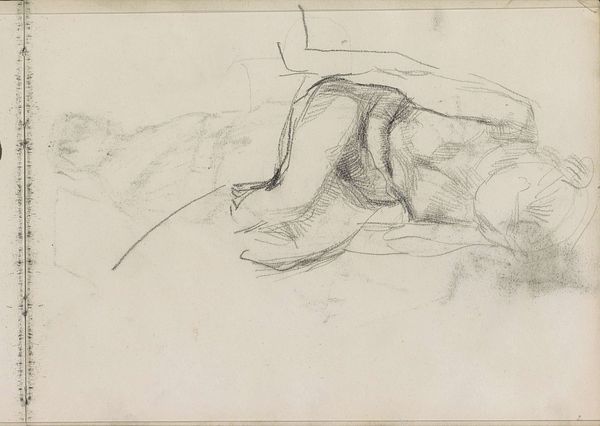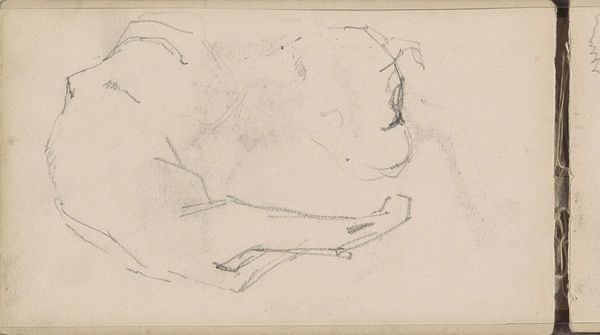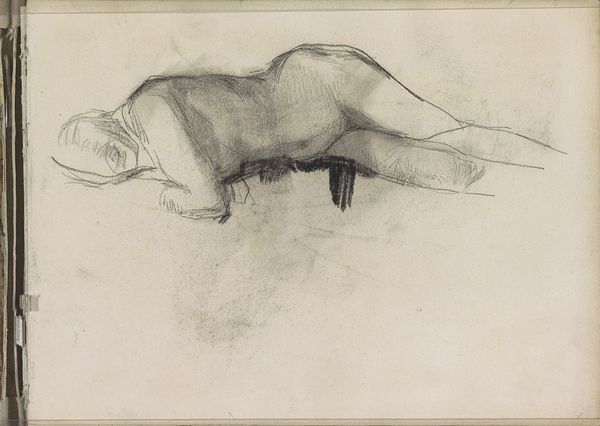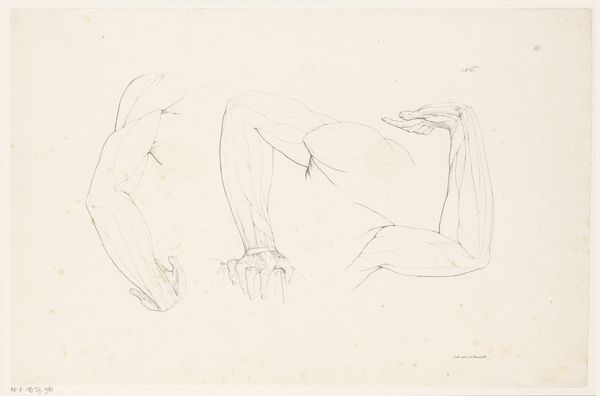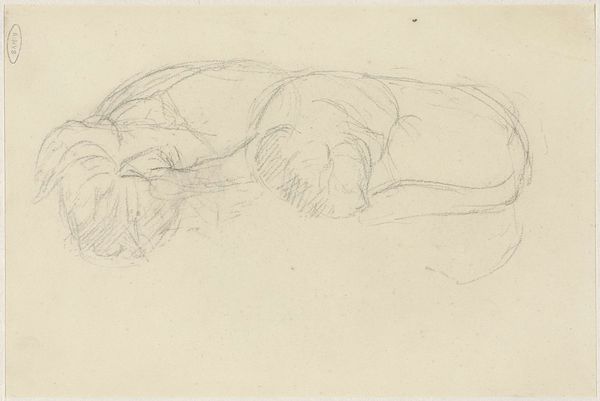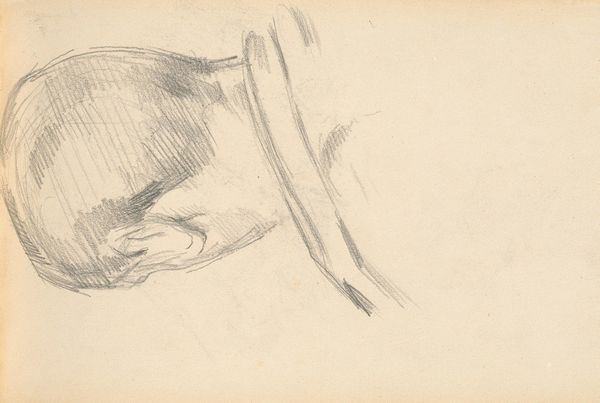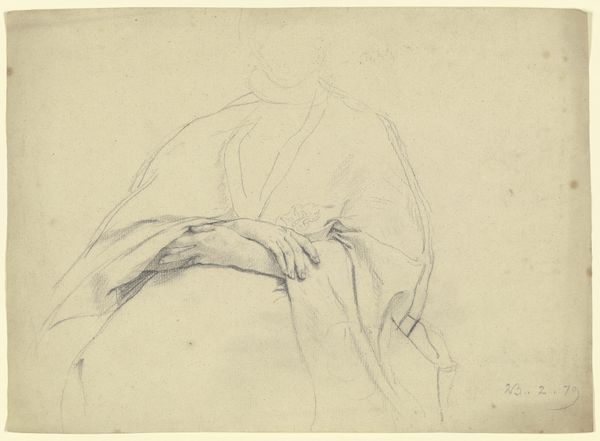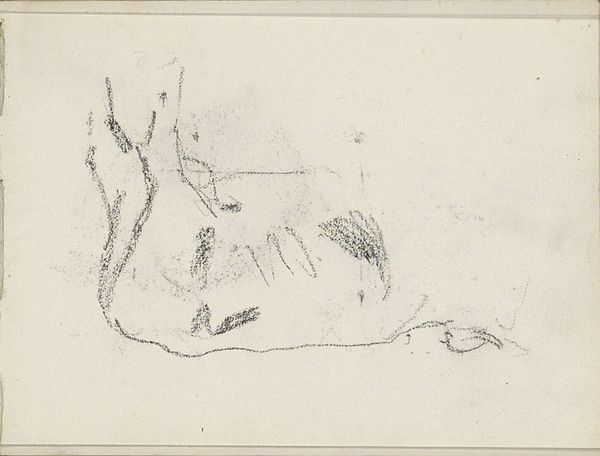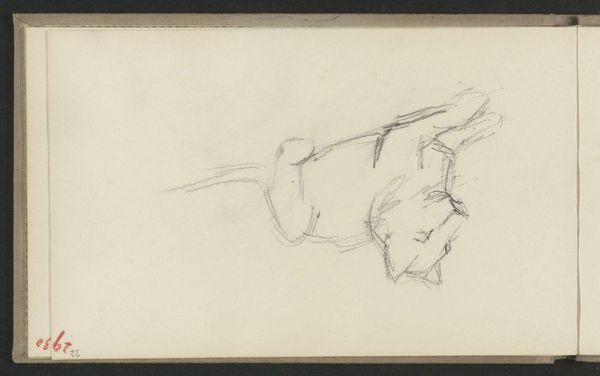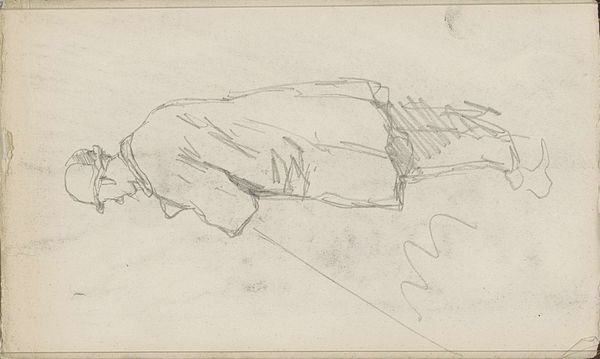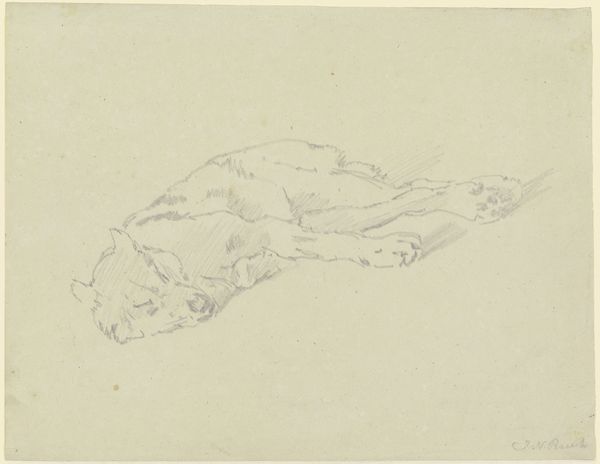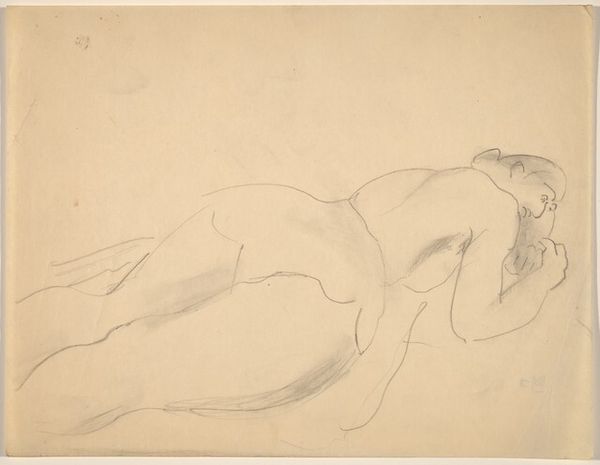
drawing, pencil
#
portrait
#
drawing
#
animal
#
pencil sketch
#
dog
#
figuration
#
pencil
#
realism
Dimensions: height 235 mm, width 145 mm
Copyright: Rijks Museum: Open Domain
Editor: This is Jozef Israëls' "Sketch of a Dog, From the Side," made sometime between 1834 and 1911. It’s a pencil drawing, quite simple in its lines. There's a casual, almost fleeting quality to it. What do you see in this piece? Curator: The sketch's very existence and preservation within a museum context raises fascinating questions about the art world and the societal value placed on even seemingly minor works. Why this particular sketch? What does it tell us about Israëls' artistic process and how society views animals, especially domestic ones, during that period? Editor: That’s interesting. So you're less focused on the dog itself and more on why we're looking at it in a museum? Curator: Precisely! It compels us to ask: what was Israëls’ standing at the time, and has his recognition amplified the appreciation of the sketch? The rise of Realism surely played a role, elevating everyday scenes and subjects to artistic merit. The "politics of imagery" weren’t always confined to grand historical paintings, you know. What role does that play? Editor: I guess I hadn’t thought about it that way. So even a simple drawing of a dog can reflect bigger social and cultural trends. Did these kinds of sketches usually remain private? Curator: It's highly likely, yes. Then you're tasked to investigate Israëls' market appeal, exhibition history, and collecting practices. Think, why this drawing instead of, say, one of his well known genre paintings? The history of this single image offers insights into changing artistic values and institutional priorities over time. Editor: That’s given me a lot to think about – looking beyond the surface of the artwork to understand its cultural significance. Curator: Exactly! Art isn’t created in a vacuum. It reflects, and is shaped by, the world around it, just as our interpretation is framed by what we value as society.
Comments
No comments
Be the first to comment and join the conversation on the ultimate creative platform.
